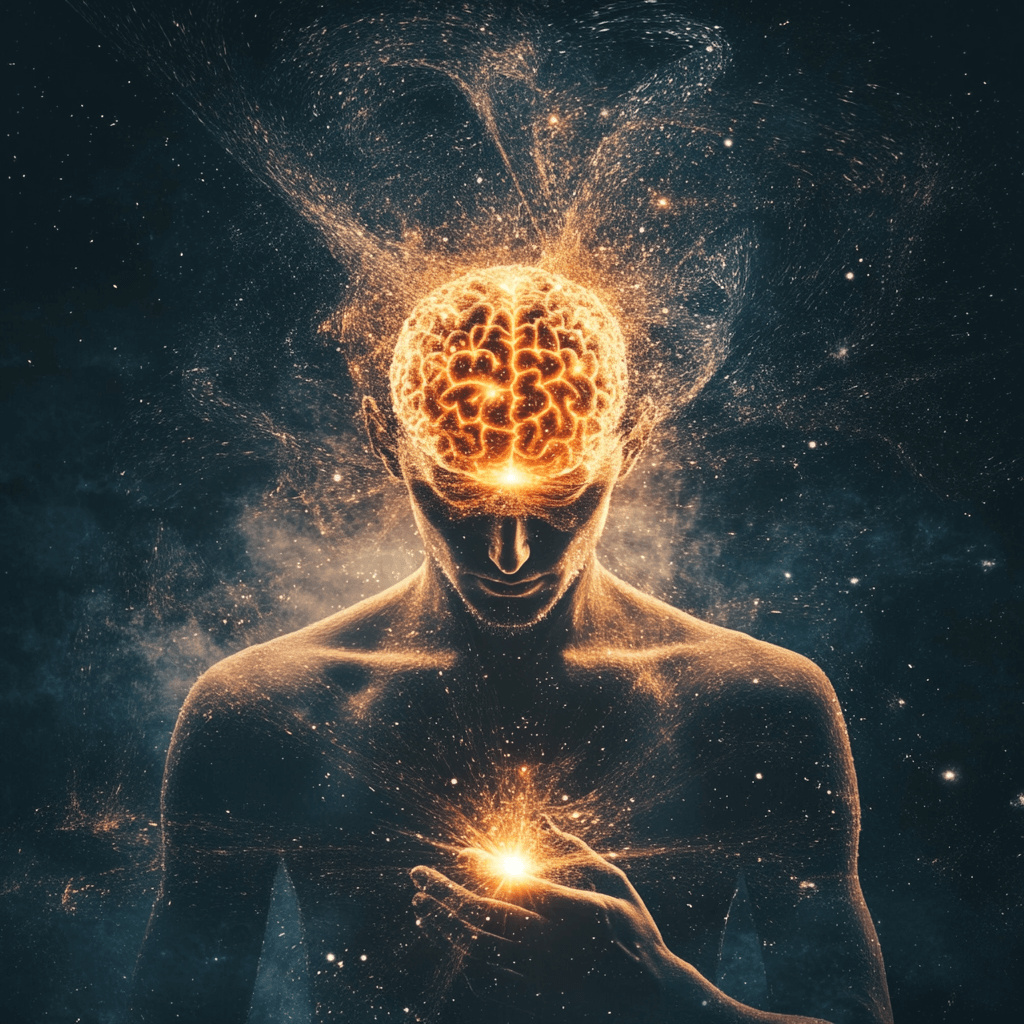Age 12 & up.
Alright, picture this: you’re sitting there, pondering life’s big questions—y’know, the classics: “Why am I here?”, “What’s the meaning of it all?”, and “Is there something more to me than just flesh and bones?” Well, people have been scratching their heads over that last one for centuries—philosophers, scientists, spiritual types, you name it. Some reckon the soul’s this mystical, untouchable thing, while others, not so much.
So, grab a seat, and let’s jump into this debate!
The Soul: A Global Smorgasbord of Ideas
First up, let’s talk about how humans have been obsessed with the soul since forever. Every culture has had a crack at defining this invisible “thing” that makes us, well, us. To Name a few:
- Ancient Egypt: The Egyptians believed in the ka (life force) and ba (personality), spiritual components that lived on after death.
- Greek Philosophy: Plato described the soul as immortal and divine, while Aristotle viewed it as the essence that animates life.
- Eastern Perspectives: Hindu philosophy identifies the soul as Atman, the eternal self, while Buddhism’s Anatta challenges the notion of a permanent soul, emphasizing impermanence instead.
See what I mean? Everyone’s got their own spin on this soul business.
Science vs. the Soul:
Putting on our lab coats and taking a stroll through the fascinating halls of science. Modern neuroscience has made impressive leaps in understanding consciousness. Scientists wonder: is consciousness just neurons firing off like tiny fireworks, or is there something more to it?
Near-Death Experiences (NDEs): A Glimpse Beyond?
You’ve probably heard those intriguing stories about people who momentarily “died” and returned with vivid memories of bright lights, peaceful feelings, or even floating outside their bodies. Science has explanations for this, of course:
Scientific Perspectives:
Researchers have proposed several physiological and psychological explanations for NDEs:
- Brain Activity: Some studies have observed spikes in brain activity at the time of death. For instance, research published in Frontiers in Aging Neuroscience documented enhanced neuronal activity in a dying human brain, which could correlate with reported NDEs.
- Neurochemical Responses: The release of endorphins and other neurotransmitters during traumatic events may produce sensations of euphoria or detachment, potentially explaining some aspects of NDEs.
- Psychological Factors: Some theories suggest that NDEs result from the brain’s attempt to make sense of traumatic events, leading to vivid experiences that are later recalled as NDEs.
But others ask: Could these experiences hint at the existence of a soul, stepping out briefly before returning? It’s a mystery that keeps everyone guessing!
The Final Moment: What researchers found
Here’s something curious—researchers have observed unexpected bursts of brain activity right at the moment of death. Is this the brain’s final fireworks display, or could it be evidence of the soul saying goodbye before jumping onto the next adventure?
The truth is, nobody knows for sure, but it’s truly fascinating to consider, right?
Quantum Physics: Enter the Cosmic Playground
Ready to explore some mind-bending science? Quantum physics is like a playground where things get delightfully strange.
Quantum Consciousness: Some top scientists, like Roger Penrose and Stuart Hameroff, suggest our consciousness might be tied to quantum processes happening deep inside our brain cells. Could these tiny quantum events be where the soul lives? It’s a captivating idea!
Quantum Entanglement: Here’s a brain teaser—quantum particles can remain connected no matter how far apart they are, like cosmic pen pals. This leads some to wonder if there might be a universal consciousness or interconnected soul. Pretty amazing stuff, isn’t it?
Sure, these ideas aren’t fully accepted yet, but they’re exciting and inspiring. Could our soul have its own quantum secrets?
Energy Fields: Are We Human Glow Sticks?
Another fascinating idea is that humans might be surrounded by subtle energy fields called biofields. Imagine an invisible aura of energy influencing our health and even consciousness.
Could these fields be the scientific hint that the soul exists? It’s enough to spark curiosity! But still, it can be explained away quite easily.
The Great Debate: Dualism vs. Materialism
Let’s briefly jump into philosophy, no need for headaches, we’ll keep it fun!
Dualism: Philosopher René Descartes believed the body and soul (or mind) were entirely separate. Think of the soul as a mysterious traveler living within the body.
Materialism: Today’s scientists usually say everything we experience, including consciousness, is simply brain chemistry. No extra mystery, just neurons firing away.
Who’s right? That’s a fantastic mystery we’re still unraveling.
Spirituality with a Modern Twist
Nowadays, spirituality isn’t just about ancient temples or monks. Practices like mindfulness, meditation, and energy healing have becoming more popular ways for people to connect with their inner self, what many call the soul. Whether you’re skeptical or open-minded, it’s interesting to explore these new ways of looking inward.
Revisiting Near-Death Experiences
People who’ve had near-death experiences often describe meeting a warm, comforting light or reconnecting with loved ones who’ve passed away. While skeptics think it’s just the brain playing tricks, others see it as proof that the soul embarks on an extraordinary journey beyond life.
As Aristotle poetically put it, “The soul never thinks without a picture.” Pretty thought-provoking, isn’t it?
Science and Spirituality: Friends, Not Rivals?
The relationship between science and spirituality isn’t just philosophical chatter—there’s fascinating evidence suggesting the two might actually be allies rather than rivals.
Heart-Brain Harmony (HeartMath Research):
Groundbreaking research, like that conducted by the HeartMath Institute, has shown that when your heart rhythms sync up harmoniously with your brainwaves, it positively influences physical and emotional health. This isn’t just wishful thinking—it’s measurable science. Could this synchronization indicate a deeper, perhaps even spiritual connection within us?
The Power of Intention:
Studies on intention and healing have revealed intriguing results. Research published in reputable journals, including the Journal of Alternative and Complementary Medicine, shows that when people intentionally direct positive thoughts (what some might casually call “good vibes”), recipients can experience measurable improvements in healing and overall well-being. It raises a compelling question: could this focused intention represent a subtle form of communication between souls or a shared energetic connection that’s not yet fully understood?
Rather than dismissing these findings outright, perhaps science and spirituality are simply two languages trying to describe the same underlying truth. While we don’t yet have definitive answers, these discoveries hint that what we call the “soul” might be more scientifically accessible than we think.
Now that’s worth pondering!
The Big “What If?”
Imagine if science one day proves the soul is real? What an incredible revelation that would be! It could change how we see religion, morality, and even what it means to be human. But here’s another twist: If science can’t prove it, does that mean the soul isn’t real, or just that we’re not yet clever enough to find it?
Wrapping It Up: A Beautiful Mystery
So, after all this exploring, where do we stand? The soul remains one of life’s most wonderful mysteries, suspended beautifully between science and spirituality. Neuroscience, quantum physics, and energy fields all offer tantalizing clues, yet we haven’t solved the puzzle.
Could the soul ultimately connect science and spirituality? Maybe. What do you think? Pour yourself a cozy drink, sit back, and let’s continue the conversation!

